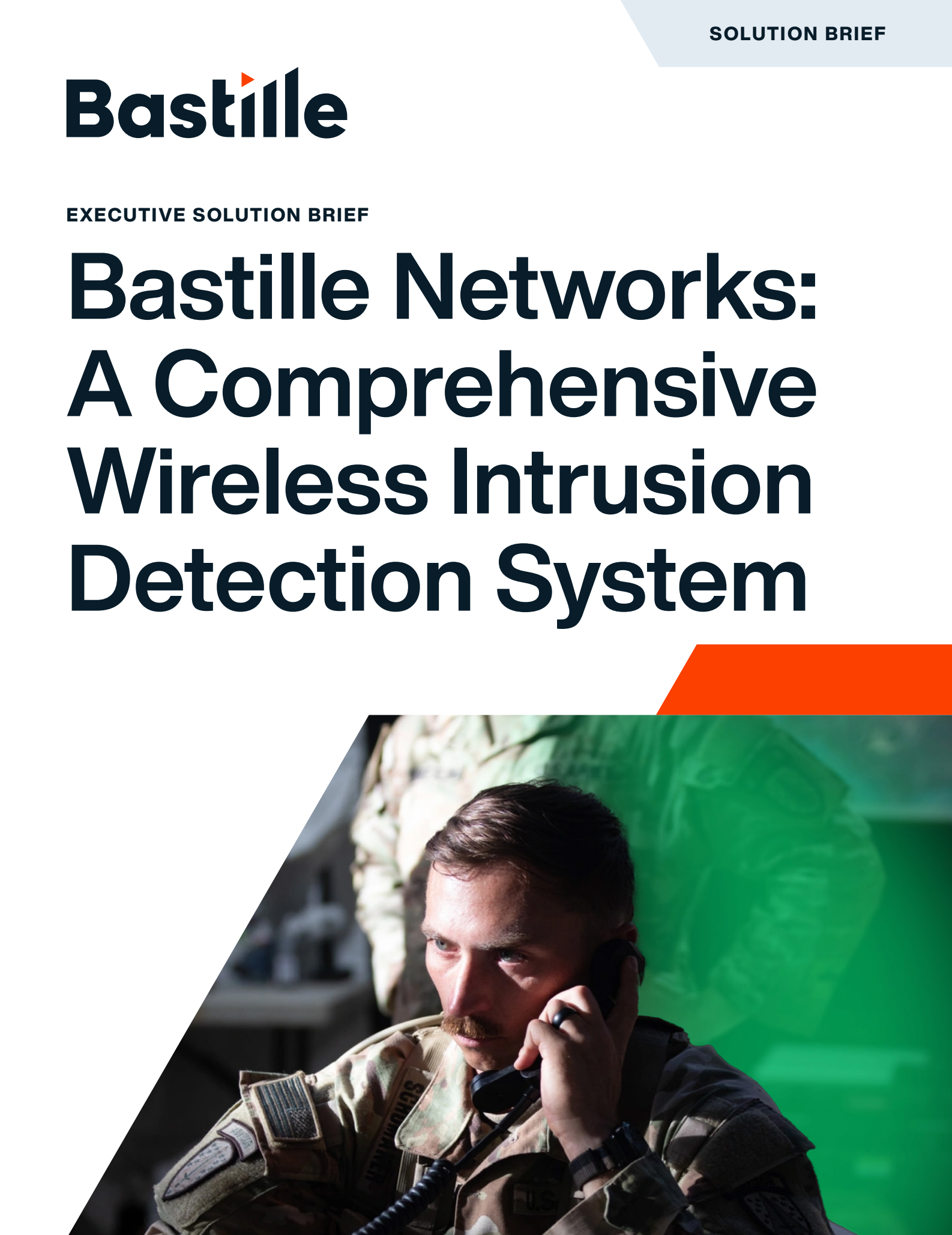
Download Now
Executive Summary
Wireless threats increasingly undermine enterprise security as organizations adopt Wi-Fi, Bluetooth, cellular, and IoT technologies. Bastille Networks offers a 100% passive, broadband Wireless Intrusion Detection System (WIDS) that delivers real-time monitoring, detection, analysis, investigation, and response capabilities.
Covering 100 MHz to 7.125 GHz, Bastille provides enterprises with critical visibility into wireless activity, allowing rapid identification and mitigation of threats across all major wireless communication protocols.
Traditional wired intrusion detection systems (IDS) and basic Wi-Fi monitoring tools fail to address these
threats, leaving organizations blind to risks in the RF spectrum. Additionally, many current solutions are
reactive, providing limited context or forensic value.
Challenges in the Wireless Threat Landscape
Modern enterprises face multiple challenges in securing the radio frequency (RF) environment:
- Wi-Fi Vulnerabilities: Organizations are susceptible to various threats, including rogue access points, Evil Twin attacks, MAC spoofing, interception of unencrypted data transmission, and protocol-level exploits such as KRACK. Devices connecting to unsanctioned Wi-Fi networks may expose corporate credentials and sensitive data.
- Bluetooth Exploits: Bluetooth connections often come configured with minimal security controls. Attacks such as BlueBorne or KNOB exploit protocol flaws to spread malware or gain access to a device’s data and communication channels.
- Cellular Risks: Mobile phones and hotspots can act as covert data connections that bypass existing security controls. This capability is particularly dangerous in secure facilities where mobile phones are restricted and in manufacturing environments where cellular interference can disrupt critical operations.
- IoT Device Proliferation: Many IoT devices lack fundamental security protections and use obscure wireless protocols. These devices often bypass traditional network security controls, creating blind spots and backdoors that can compromise the enterprise network. Traditional wired intrusion detection systems (IDS) and basic Wi-Fi monitoring tools fail to address these threats, leaving organizations blind to risks in the RF spectrum. Additionally, many current solutions are reactive, providing limited context or forensic value.

